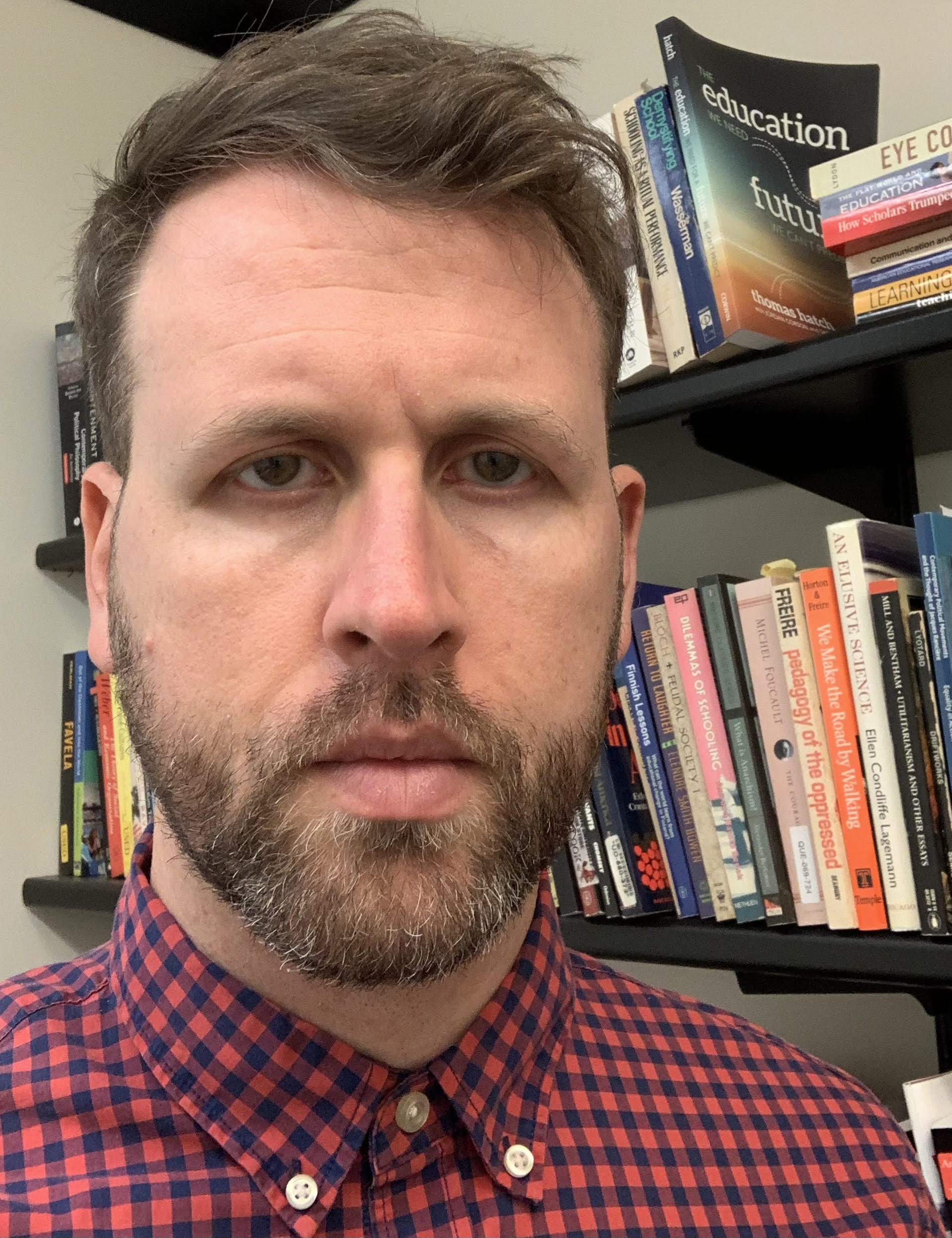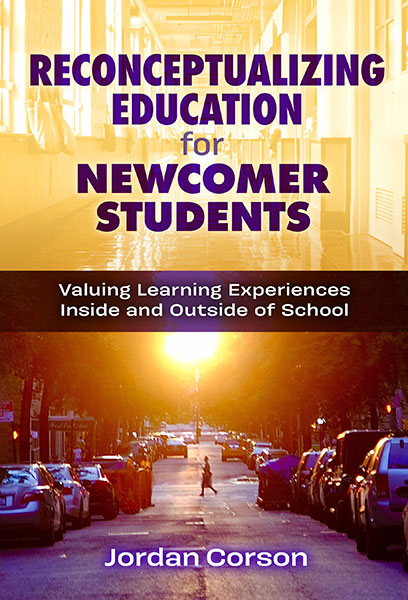 Jordan Corson is an assistant professor of education at Stockton University, Galloway, NJ.
Jordan Corson is an assistant professor of education at Stockton University, Galloway, NJ.
He is the author of Reconceptualizing Education for Newcomer Students: Valuing Learning Experiences Inside and Outside of School.
As schools tell it, the history of immigration and schooling in the U.S. is a story of two paths: exclusion or assimilation. From the 19th century and early 20th century to present day, schools have commonly operated as places of oppression for immigrant-origin students. Success—or perhaps educational survival—for those students has depended on a capacity to conform to inherently oppressive structures. In beautiful instances, though, schools have realized the dream of being public, democratic places that serve communities. Places that cherish students’ voices. Places that nurture and care, and act as a welcoming refuge. Places that provoke intellectual curiosity and embrace dynamic linguistic and cultural practices. Such schools center student identities, and joy bursts from their walls. In these schools, language is not something to acquire, but something to do. Even as students struggle, these schools will work to find ways of better including youth and helping them succeed.
For immigrant youth (I prefer the term “youth on the move” as a way of rethinking migration and nationality), this kind of educational structure can be found in newcomer schools. Newcomer schools are a model of public school specifically designed to affirm the linguistic and cultural identities of youth on the move who have recently arrived to a new place. In recent years, researchers and educators have attended to and championed this school model as one full of educational possibility. Among other evidence, newcomer schools often boast strong academic outcomes.
This kind of precious educational environment sits at the center of my new book, Reconceptualizing Education for Newcomer Students. In the fall of 2018, I began research for the project by spending time in a newcomer school in New York City. Roaming the halls, studying with teachers, or chatting with students, I regularly encountered laughter, questioning, and playful translanguaging. This school, like so many newcomer schools, nurtured dreams and welcomed youth on the move unconditionally. Despite defunding, broader anti-immigrant sentiments, and many other challenges, everyone in the school banded together to build a complex and wonderful intellectual community. In one sense, my book aims to champion these affirmative forms of schooling, and to extend the work that scholars and educators like Monisha Bajaj, Daniel Walsh, Lesley Bartlett, and Gabriela Martínez have undertaken to show the powerful educational possibilities born of supporting youth on the move.
The questions I pose in the book, however, move far beyond “how might this school improve?” or “how can school systems better include youth on the move?” Instead, I ask why youth on the move are considered educational “problems” in the first place. Why have policymakers and researchers historically framed kids, especially those from marginalized communities, as “problems” for schools to solve? And why has the “solution” so often been to make schools rigidly bordered places where students “access” education?
In addition to these questions, I move outside the school environment entirely. Even in culturally and linguistically affirmative schools, youth can still become marginalized or labeled “at-risk” of dropping out— their educational lives can become defined by what happens in school. But education is always happening, of course. Learning, creating, and figuring out the world can happen outside of school and without school as a reference point. In the book, I cautiously ask what happens when youth move into everyday life, leaving behind the language and logics of school. Instead of thinking about things like academic outcomes, what if we studied everyday educational practices? What if our understanding of learning was based on the pleasure experienced in the learning process?
To explore these questions, the book travels in two directions. On one path, I look at the history of immigration and schooling in New York City. There exists a substantial history in which education has served as a force of oppression. Beyond this, the history of how youth on the move have been included shows the way education systems have made sense of these students and created different systems to include them within the “melting pot” or “kaleidoscope” of the U.S. This history appears in tandem with a critique of how schools have come to be both places of borders and places that claim a monopoly on education. I explore these histories from an institutional perspective, but the histories of communities building schools, demanding policy changes, and challenging oppressive orders puncture a smooth, institutional narrative.
Along another path, I present an ethnographic study of education in everyday life with nine youth from a newcomer school in New York City, with whom I spent a year. We hung out in school, clubs, and museums. We wandered through the city, riding subways, exploring parks, checking out summer basketball games, or chatting in cafes. Whether inside or outside of school, these youth enjoyed wondrous educations that were not concerned with school or dominant systems. They lost themselves in memory as they described learning photography in the Dominican Republic. They navigated their own form of language education while creating plurilingual rap lyrics. They asked themselves and each other what kind of people they wanted to become, and what they owed to one another. Education is not, as they regularly demonstrated, something concerned with access or outcomes, but about living and changing the world.
I started research for this book in the middle of the Trump presidency. Even in the “sanctuary” of New York City, danger permeated everyday educational life. As much as this project was filled with laughter and play, the carceral systems that define the U.S. made it dangerous for youth participants to simply learn or express themselves in public places. Now, a few years on, U.S. policy and xenophobic action continue along an infuriatingly predictable trajectory. The current “migrant crisis” is only the latest chapter in the long history of a country that imposes violent borders, thinks of people on the move as “problems,” and considers education through this same bordering logic.
Given these relentless issues, I hope that this book contributes to the kinds of work that center youth voices and challenge deficit narratives that overwhelm conversations about immigration and education. Moreover, I hope it does so not as a way of bolstering educational research or school systems, but of disrupting them at their very roots. Youth on the move should not have to prove that they deserve to belong to schools or any other institution in the U.S. As one participant told me, “I should get these things because I’m a human.” Researchers and policymakers too should question the borders we have made in schools and elsewhere.

Reconceptualizing Education for Newcomer Students
Valuing Learning Experiences Inside and Outside of School
Jordan Corson
Photo by RDNE Stock project
